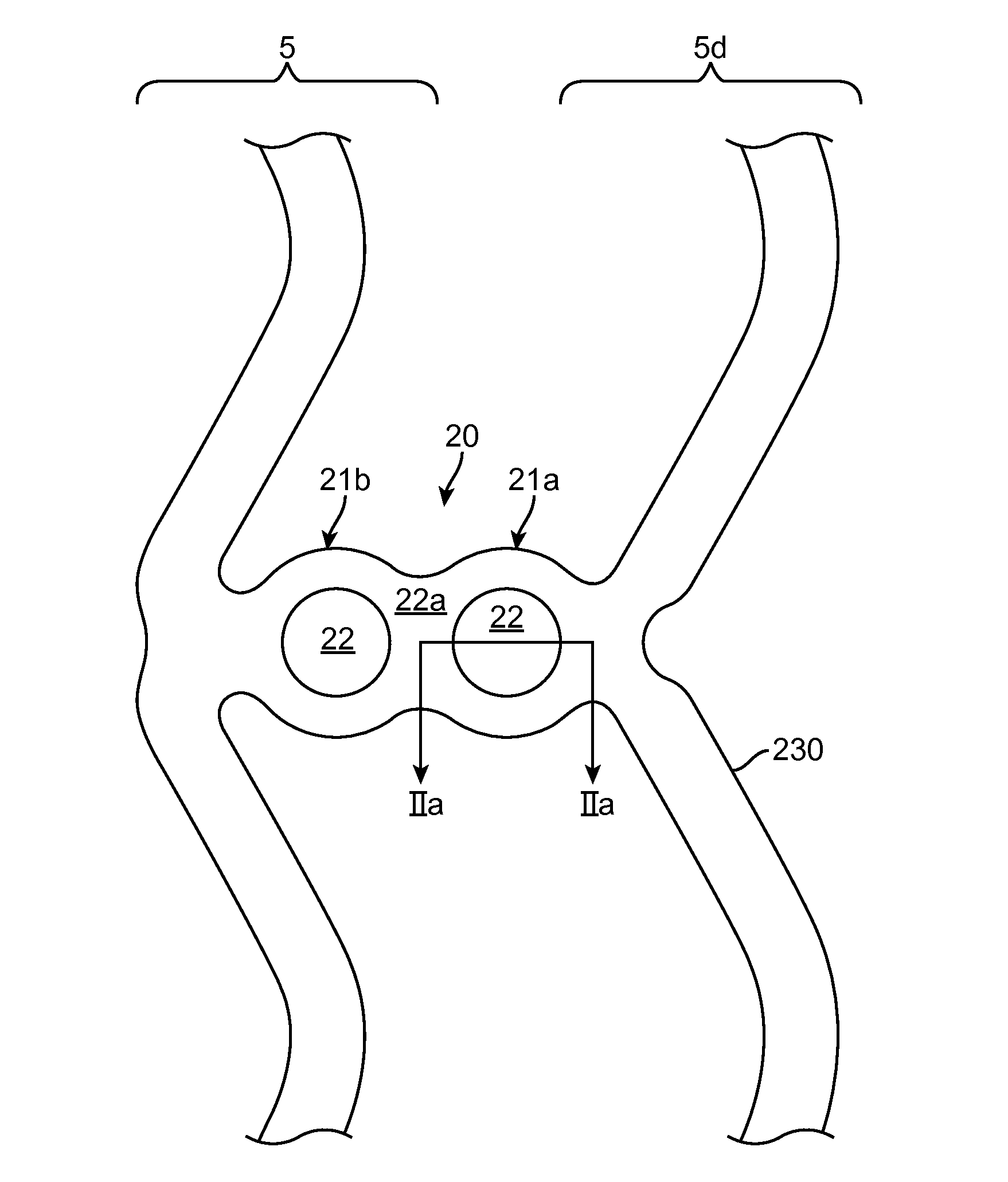Scaffolds having radiopaque markers
a scaffold and radiopaque technology, applied in the field of bioresorbable scaffolds, can solve the problems of high morbidity and mortality, and achieve the effects of reducing morbidity and mortality, reducing the risk of thrombosis, and low profil
- Summary
- Abstract
- Description
- Claims
- Application Information
AI Technical Summary
Benefits of technology
Problems solved by technology
Method used
Image
Examples
Embodiment Construction
[0061]In the description like reference numbers appearing in the drawings and description designate corresponding or like elements among the different views.
[0062]For purposes of this disclosure, the following terms and definitions apply:
[0063]The terms “about,”“approximately,”“generally,” or “substantially” mean 30%, 20%, 15%, 10%, 5%, 4%, 3%, 2%, 1.5%, 1%, between 1-2%, 1-3%, 1-5%, or 0.5%-5% less or more than, less than, or more than a stated value, a range or each endpoint of a stated range, or a one-sigma, two-sigma, three-sigma variation from a stated mean or expected value (Gaussian distribution). For example, d1 about d2 means d1 is 30%, 20%, 15%, 10%, 5%, 4%, 3%, 2%, 1.5%, 1%, 0% or between 1-2%, 1-3%, 1-5%, or 0.5%-5% different from d2. If d1 is a mean value, then d2 is about d1 means d2 is within a one-sigma, two-sigma, or three-sigma variance or standard deviation from d1.
[0064]It is understood that any numerical value, range, or either range endpoint (including, e.g., “...
PUM
| Property | Measurement | Unit |
|---|---|---|
| time | aaaaa | aaaaa |
| time | aaaaa | aaaaa |
| time | aaaaa | aaaaa |
Abstract
Description
Claims
Application Information
 Login to View More
Login to View More - R&D
- Intellectual Property
- Life Sciences
- Materials
- Tech Scout
- Unparalleled Data Quality
- Higher Quality Content
- 60% Fewer Hallucinations
Browse by: Latest US Patents, China's latest patents, Technical Efficacy Thesaurus, Application Domain, Technology Topic, Popular Technical Reports.
© 2025 PatSnap. All rights reserved.Legal|Privacy policy|Modern Slavery Act Transparency Statement|Sitemap|About US| Contact US: help@patsnap.com



